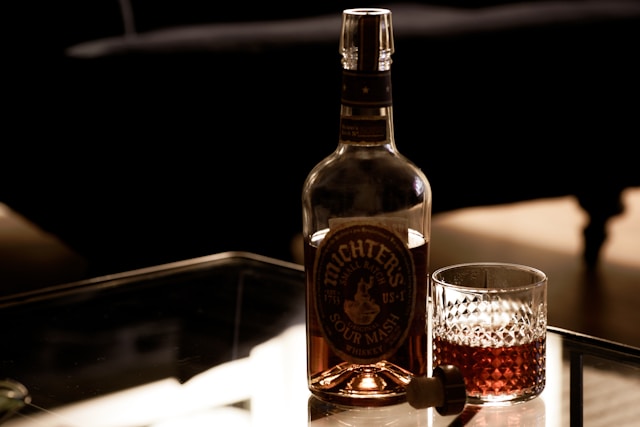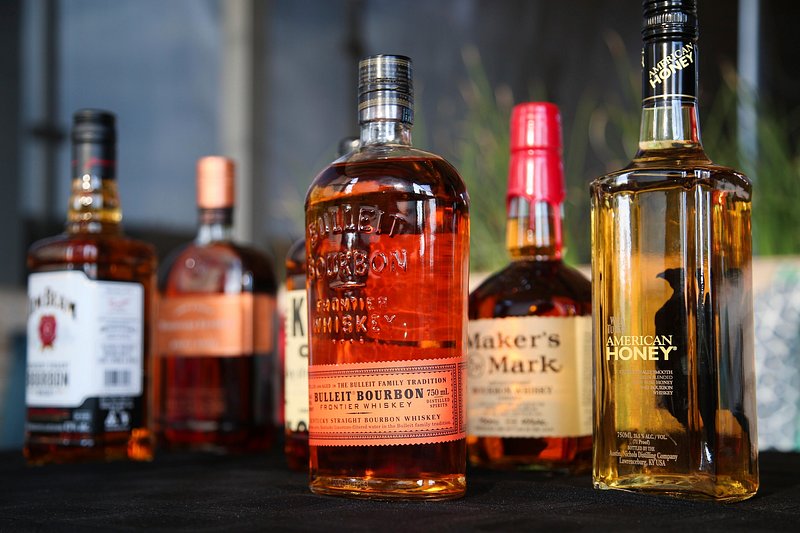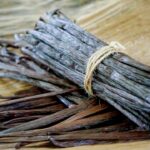
Fine whiskey is a beloved drink for many, and the aging process is a crucial part of its production. But can fine whiskey age overnight? This question has been a topic of debate among whiskey enthusiasts and distillers alike. The answer is not straightforward, as it depends on various factors such as the distillation process, the type of whiskey, and the aging technology used.
Table of Contents
Understanding Whiskey Aging
The Basics of Whiskey Maturation
Whiskey aging is a process that involves storing distilled spirits in wooden barrels for a certain period of time. During this time, the whiskey undergoes a series of chemical reactions that change its flavor, aroma, and color. The type of wood, the size of the barrel, and the climate where the barrels are stored can all affect the final product.
The most common types of wood used for whiskey aging are oak, cherry, and maple. Oak is the most popular because it is porous and allows the whiskey to breathe, which helps it mature. The size of the barrel is also important. Smaller barrels allow the whiskey to age faster because there is more surface area in contact with the liquid. However, larger barrels are often preferred because they impart a milder flavor.
The climate where the barrels are stored can also affect the aging process. In warmer climates, the whiskey expands and contracts more, which causes it to extract more flavor from the wood. In cooler climates, the whiskey ages more slowly and has a milder flavor.
Chemical Changes During Aging
During whiskey aging, several chemical reactions take place that affect the flavor and aroma of the final product. The most important of these reactions is the extraction of compounds from the wood. The wood contains several compounds, including lignin, tannins, and vanillin, which are extracted by the alcohol in the whiskey. These compounds give whiskey its characteristic flavor and aroma.
Another important reaction that takes place during aging is oxidation. Oxygen from the air slowly enters the barrel and reacts with the alcohol in the whiskey. This reaction creates new compounds that contribute to the flavor and aroma of the whiskey.
Finally, during aging, the whiskey undergoes esterification, which is the reaction between alcohol and acids. This reaction creates new compounds that contribute to the fruity and floral notes in the whiskey.
 photo credit: images.rawpixel.com
photo credit: images.rawpixel.com
Factors Influencing Whiskey Aging
Whiskey aging is a complex process that is influenced by several factors. Here are some of the factors that impact the aging process of fine whiskey:
Type of Cask
The type of cask used for aging whiskey plays a crucial role in determining the final taste and flavor of the whiskey. Different types of casks, such as oak, sherry, and bourbon, can impart unique flavors to the whiskey. Oak casks are the most commonly used casks for aging whiskey, as they provide a neutral flavor profile that allows the whiskey to develop its own unique taste and aroma. Sherry casks, on the other hand, can add fruity and nutty flavors to the whiskey, while bourbon casks can impart notes of vanilla and caramel.
Warehouse Conditions
The conditions in which whiskey is stored during the aging process can also impact its final taste and flavor. Factors such as temperature, humidity, and air circulation can all influence the aging process. For example, higher temperatures can cause the whiskey to age faster, while lower temperatures can slow down the aging process. Similarly, higher humidity levels can prevent the whiskey from evaporating too quickly, while lower humidity levels can cause the whiskey to evaporate too quickly.
Time Factor
The length of time that whiskey is aged can also impact its final taste and flavor. Generally, the longer whiskey is aged, the smoother and more complex its flavor becomes. However, there is no hard and fast rule when it comes to aging whiskey, as different types of whiskey can benefit from different aging periods. For example, bourbon is typically aged for around 2-4 years, while scotch can be aged for up to 25 years or more. Ultimately, the length of time that whiskey is aged will depend on the type of whiskey and the desired flavor profile.
Evaluating Aged Whiskey
When evaluating aged whiskey, there are several factors to consider. The age of the whiskey is often the first thing that comes to mind, but it’s not always an accurate indicator of quality. Here are some other factors to consider when evaluating aged whiskey.
Tasting Notes
Tasting notes are a crucial aspect of evaluating aged whiskey. Aged whiskey has a complex flavor profile that changes as it ages. Some of the flavors that are commonly associated with aged whiskey include vanilla, caramel, and oak. The tasting notes can help you determine the quality of the whiskey and whether it’s worth the price.
Color and Viscosity
The color and viscosity of aged whiskey can also provide valuable information about its quality. Whiskey that has been aged for a long time tends to be darker in color and thicker in viscosity. The color can indicate the type of barrel used to age the whiskey, as well as the length of time it was aged. Viscosity can indicate the alcohol content and the quality of the whiskey.
Aging Whiskey at Home
Aging whiskey at home is a popular hobby among whiskey enthusiasts. It is legal to age whiskey at home in most countries, including the United States, as long as the person is not selling the whiskey. However, there are some legal considerations that should be taken into account before starting the process.
Legal Considerations
In the United States, individuals are allowed to make up to 100 gallons of beer and wine per year for personal consumption without a permit. However, distilling spirits at home is illegal without a permit. Therefore, it is important to note that aging whiskey at home is only legal if the whiskey was legally obtained and the person is not distilling the whiskey themselves.
In addition, it is important to label the whiskey properly. The label should include the type of whiskey, the date it was made, and the date it was bottled. This will help ensure that the whiskey is not mistaken for an illegally produced spirit.
Techniques and Challenges
There are several techniques for aging whiskey at home, including barrel aging, wooden staves aging, and charred strips aging. Barrel aging is the most traditional method and involves using a small oak barrel to age the whiskey. Wooden staves aging involves adding small pieces of wood to the whiskey to simulate the aging process. Charred strips aging involves charring small strips of oak and adding them to the whiskey.
One of the challenges of aging whiskey at home is achieving consistency in flavor. The aging process can be unpredictable and may result in variations in flavor from batch to batch. Additionally, it can be difficult to control the temperature and humidity levels during the aging process, which can affect the final product.
Commercial Whiskey Aging Practices
Large Scale Operations
Large-scale whiskey operations typically use oak barrels to age their spirits. The barrels are charred, and the whiskey is left to age for several years. During this time, the whiskey takes on the flavors and colors of the oak barrel. The longer the whiskey is aged, the more complex the flavors become.
Innovation in Whiskey Aging
In recent years, several companies have claimed to have developed technology that can speed up the aging process of whiskey. These companies use various methods, such as ultrasound, pressure, and temperature, to accelerate the chemical reactions that occur during the aging process.
One such company is Lost Spirits, which uses a process called “reactive aging” to age their spirits in a matter of days rather than years. The process involves exposing the whiskey to high-intensity light and heat, which causes the chemical reactions that occur during the aging process to happen at a much faster rate.
Another company, Bespoken Spirits, uses a process called “bespoke maturation” to create custom-aged whiskey. The process involves exposing the whiskey to a combination of wood types, toasting levels, and char levels, which allows the company to create a specific flavor profile in a matter of days rather than years.
Despite the claims of these companies, there is some skepticism in the industry about the effectiveness of these methods. Many experts believe that the aging process is an important part of the whiskey-making process and cannot be replicated by technology alone.
Frequently Asked Questions
What is the optimal duration for aging whiskey in barrels?
The optimal duration for aging whiskey in barrels varies depending on the type of whiskey being aged and the desired flavor profile. Generally, most whiskeys are aged for a minimum of two years, but some may be aged for much longer periods, up to 20 years or more. Bourbon, for example, is typically aged for at least four years, while Scotch whisky is often aged for a minimum of 10 years. Ultimately, the optimal duration for aging whiskey in barrels is determined by the distiller’s preference and the desired flavor profile.
Can the quality of whiskey improve over time in an unopened bottle?
No, the quality of whiskey does not improve over time in an unopened bottle. Once the whiskey is bottled, it stops aging and will not change in flavor or quality. However, the quality of whiskey can deteriorate if it is stored improperly, such as in direct sunlight or at extreme temperatures.
Is there a minimum aging period required for single malt whiskies?
Yes, there is a minimum aging period required for single malt whiskies. According to the Scotch Whisky Regulations, single malt Scotch whisky must be matured in oak casks for a minimum of three years. However, most single malt whiskies are aged for much longer periods, often up to 10 or 12 years, to achieve the desired flavor profile.
Are there any risks associated with consuming extremely old whiskey?
There are no significant health risks associated with consuming extremely old whiskey, but the flavor profile may be affected. Over time, whiskey may lose some of its flavor and aroma and may take on a woody or musty taste. Additionally, extremely old whiskey may have evaporated over time, leaving less liquid in the bottle.
How does the aging process in barrels affect the flavor profile of whiskey?
The aging process in barrels is essential to the flavor profile of whiskey. As whiskey ages in barrels, it absorbs flavors and aromas from the wood, such as vanilla, caramel, and oak. The wood also filters out unwanted flavors and impurities, resulting in a smoother, more refined whiskey. The type of wood used, the size of the barrel, and the duration of aging all play a role in the final flavor profile of the whiskey.
Conclusion
Aging fine whiskey is a delicate balance between science and art. While there are many factors that can influence the final product, a skilled distiller can create truly exceptional whiskey through careful attention to detail and a deep understanding of the aging process.
Related Posts
If you’re interested in learning more about whiskey, The Whisky Lady has a variety of informative articles that can help you expand your knowledge. Here are a few related posts that you might find interesting:
- Can You Mix Rum and Tequila? A Bartender’s Perspective: If you’re curious about mixing different types of spirits, this article explores the compatibility of rum and tequila.
- Virginia Black Whiskey Price: How Much Does It Cost?: Virginia Black Whiskey is a popular American whiskey that has gained a lot of attention due to its association with the famous rapper, Drake. This post provides information about the cost of this whiskey.
- What Color is Bourbon?: Bourbon is a type of whiskey that is primarily made from corn and aged in charred oak barrels. This article explains the color of bourbon and how it is affected by the aging process.
- What Does Bottom Shelf Whiskey Mean? Explained.: If you’re interested in learning more about the different types of whiskey available, this post explains what bottom shelf whiskey is and how it differs from other options on the market.
- What Does an Old Fashioned Cocktail Taste Like?: The Old Fashioned cocktail is a classic drink that has been around for over a century. This article explores the taste of this sophisticated cocktail made with bourbon or rye.



